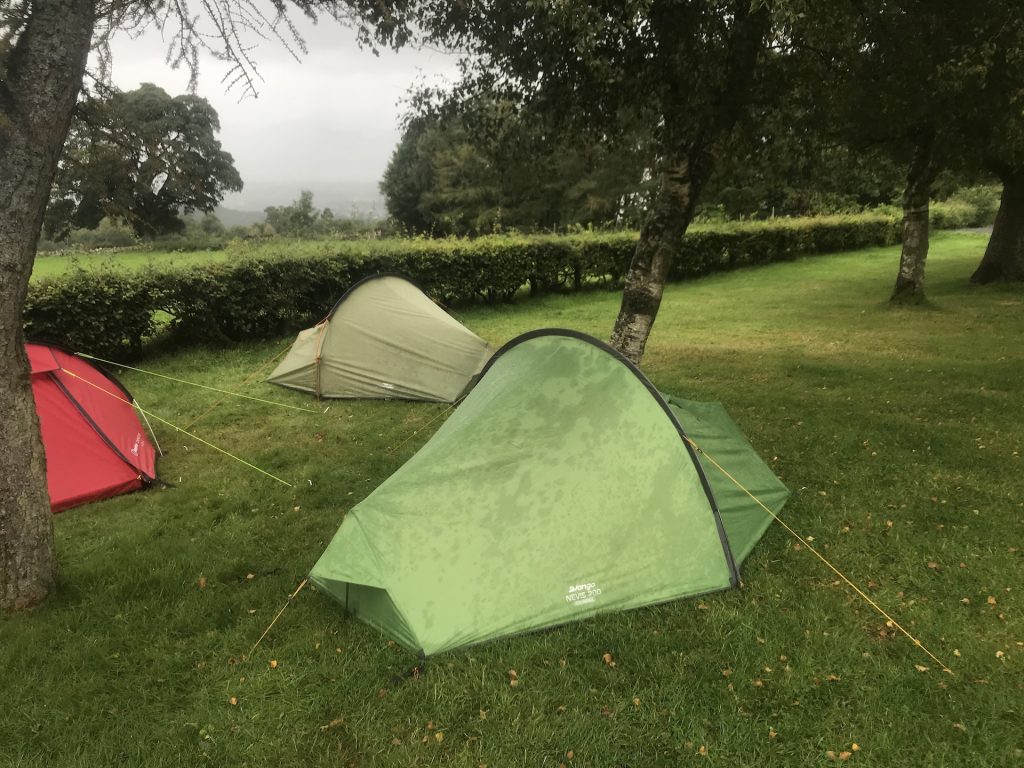
Vango’s Nevis vs Cairngorm ranges are excellent tents. I have experience with the Nevis 200 and the Cairngorm 200, and on a recent trip to the Lake District we had both in our group. Having tried both, I found the Nevis slightly easier to pitch, but the extra waterproof fabric on the Cairngorm and it’s two-directional zips do give it an edge.
Vangon Nevis vs Cairngorm
COMPARISON
| Nevis | Cairngorm | |
| RRP (for 200 version) | £110 | £155 |
| Packed Weight (for 200 version) | 2.02kg | 2.05kg |
| Flysheet Hydrostatic Head | 3,000mm | 5,000mm |
| Groundsheet Hydrostatic Head | 6,000mm | 6,000mm |
| Pitches | Together / Outer First | Together / Outer First |
| Flysheet vents | 2 vents, none adjustable | 4 vents, 2 adjustable |
| Pitch time (advertised) | 5 minutes | 7 minutes |
| Doors | 2 | 2 |
| Vestibules | 1 | 1 |
| Vestibule has groundsheet? | No | No |
Nevis
Full review: Vango Nevis 200 Review
Vango website: Vango Nevis 200
The Vango Nevis 200 is my current favourite tent. It is inexpensive, spacious and holds up well in weather. It also provides more headroom than I’ve ever seen in a 1-person tent. The Nevis 200 is advertised as a 2-person tent, but really you’d struggle with any more than 1.
Cairngorm
Full review: Coming Soon
Vango website: Vango Cairngorm 200
Just like the Nevis, the Cairngorm provides a lot of headroom, and just like the Nevis, it’s only really good for one person – but two could fit at a stretch. It is a really great tent with tough, waterproof fabric and striking orange poles made with acid-free processing, which is more eco-friendly than other methods.
Nevis vs Cairngorm
I will go through various aspects of each tent range, comparing them.
Pitching
Both the Nevis and Cairngorm pitch in exactly the same way, with the ridge line being pulled tight first. However, the Nevis has the base of its short poles connected directly to the same peg as the ridge, while with the Cairngorm two separate pegs are needed – in my view unnecessary. This change also makes the Cairngorm a bit harder to pitch in my view.
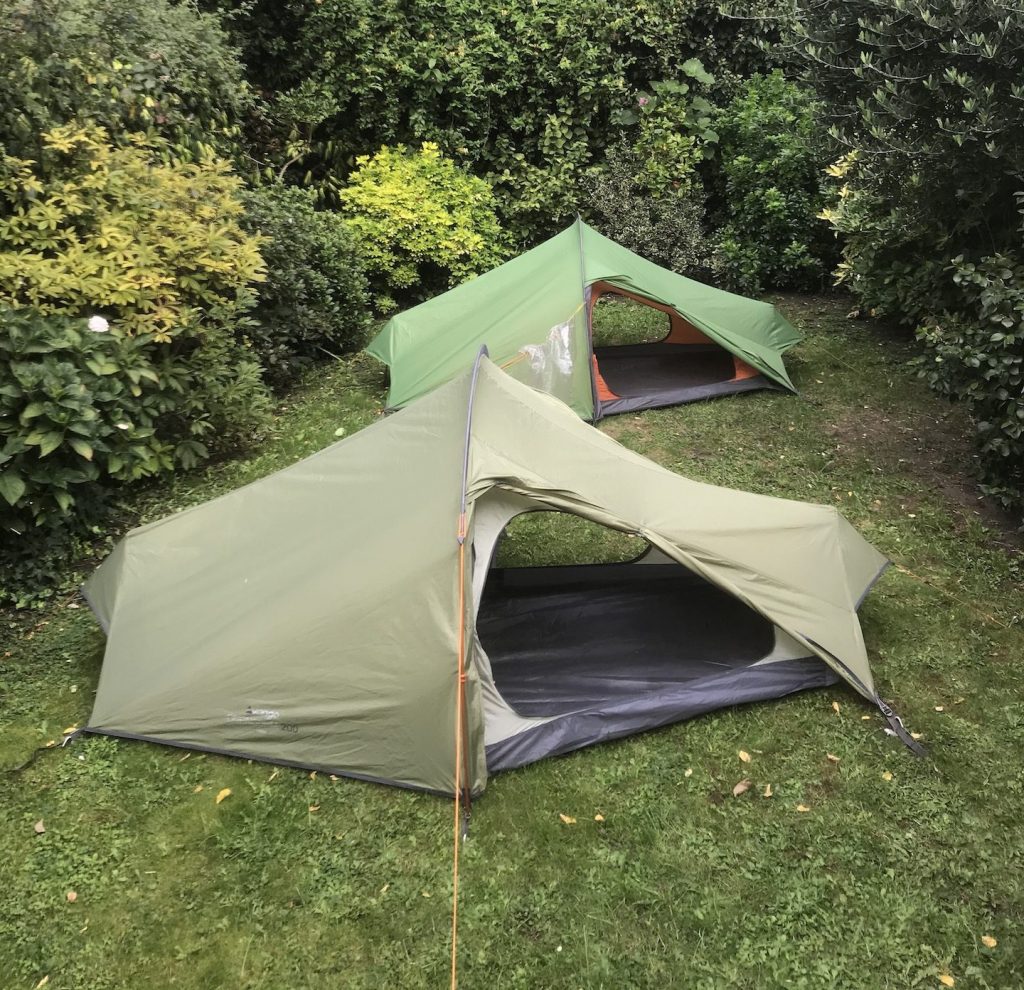
Packing
Both the Nevis and the Cairngorm come with Vango’s fast pack bag, which makes packing easy – or, if you fold the tent properly, it means you can tighten the bag and pack it far better and smaller than factory. Folding the tent is, I think, always worth it, as it keeps the tent in better condition and makes it take up less space. I mention this fast pack bag in my review of the Nevis, here. Aside from the bag, both of these tents pack in exactly the same way, but the Cairngorm packs slightly smaller. The Nevis goes down to 46cm x 15cm diameter, and the Cairngorm to 45×12 – the difference is noticeable.
I’ve mentioned before that I always separate the inner and outer of my tent before packing.This makes them easier to pack and means I’m less likely to get a wet inner and have to sleep in a damp tent. I can’t think of any time where it wouldn’t be a good idea to do this: it’s worth the extra 5 minutes to have a dry tent to sleep in, and one that packs smaller.
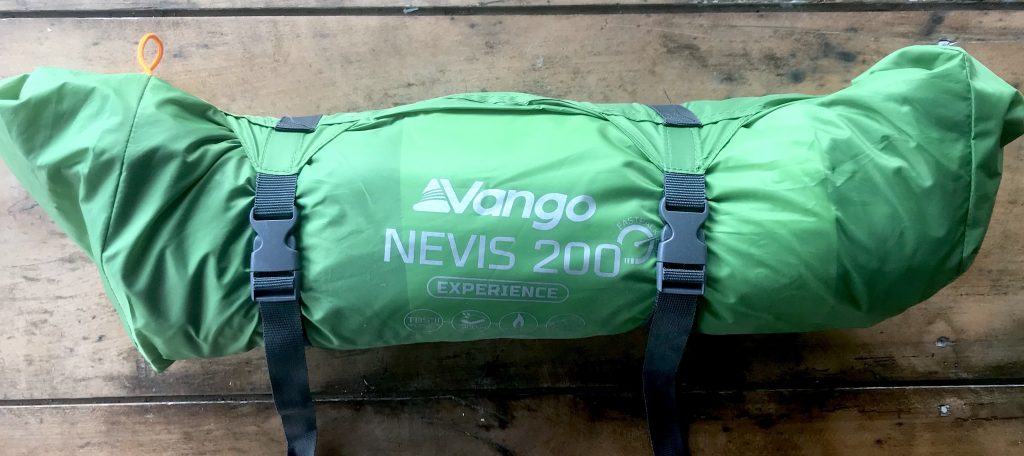
Inside
In the Nevis vs Cairngorm, the insides are identical in shape. Like the outers, the Cairngorm’s inner is a slightly less noticeable colour – greyish green rather than the Nevis’ orange. Both have Vango’s tension bands running through the inner, which makes taking the inner out take a bit longer than it could – but it’s still worth it.
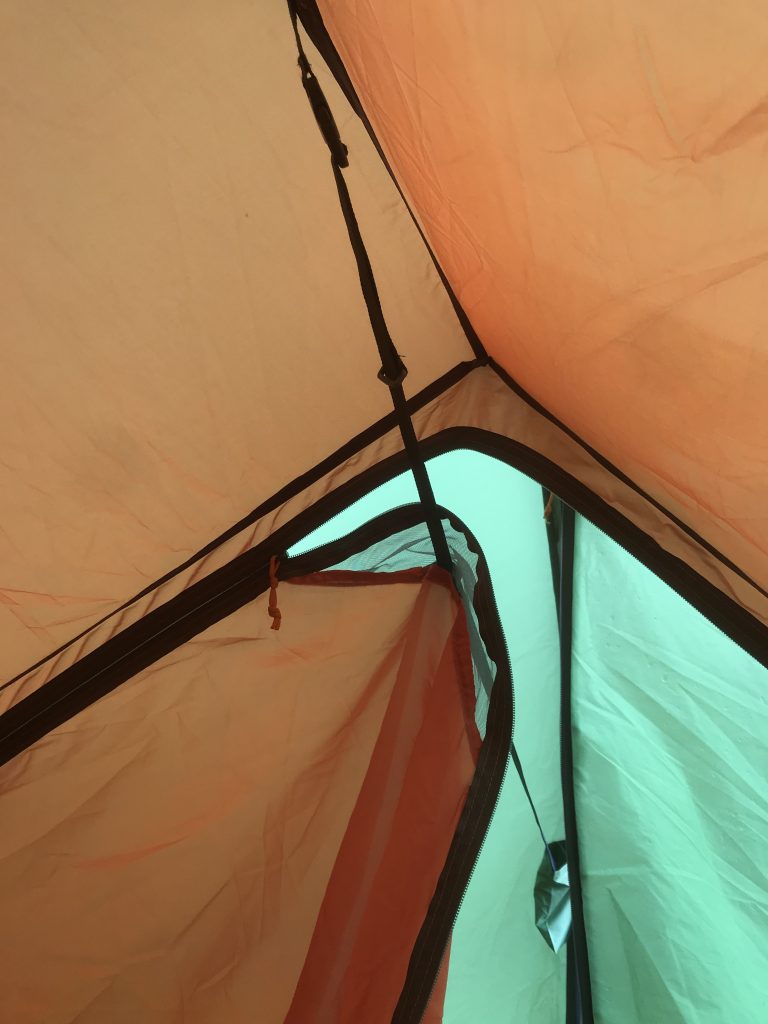
The Nevis and Cairngorm have the same pockets at the base of the inner, next to the smaller of the 2 doors, on the non-vestibule side. These pockets, incidentally, are exactly the right size for an OS map to fit. The Cairngorm also has 2 extra pockets on the tent ceiling, which can be used to hold a torch or a compass – small, light items.
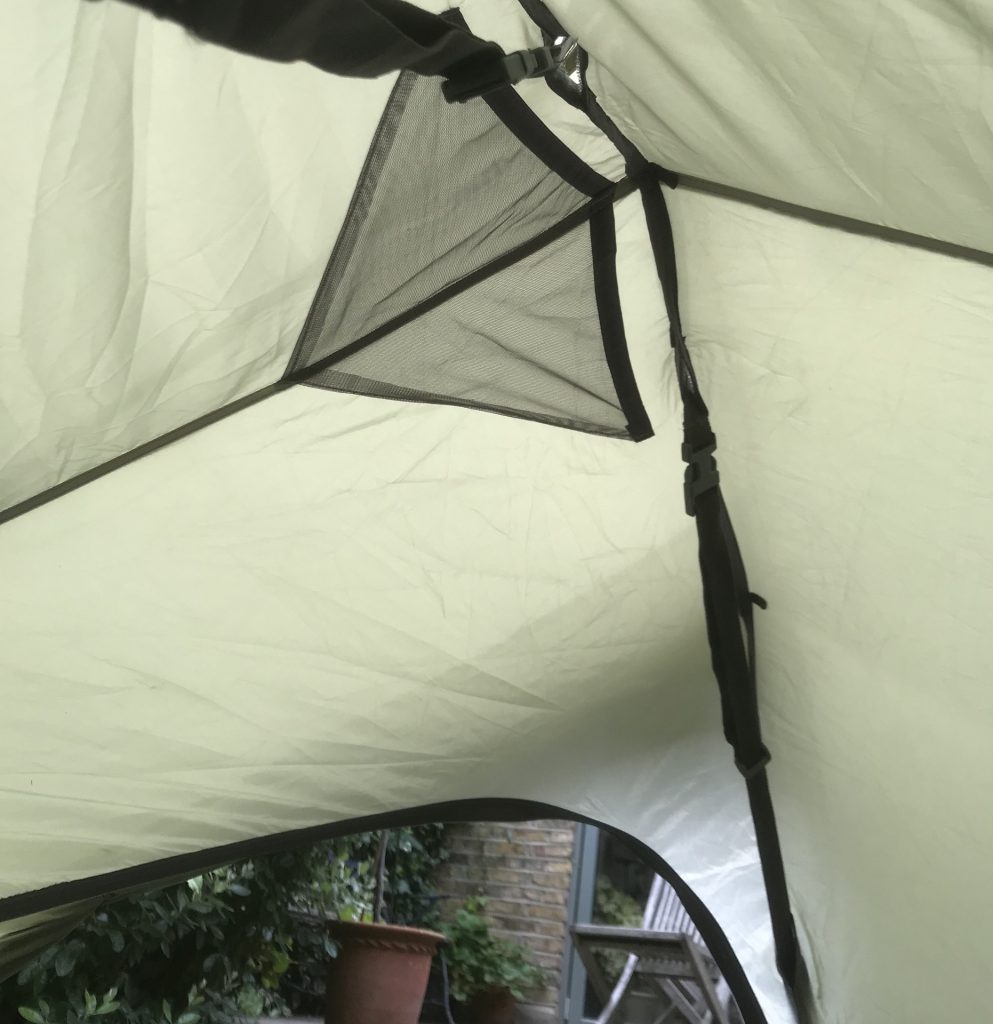
The only other difference inside are the zips. The Nevis’ zips each have one zip pull, so you can only open the inner doors in one direction and the outer doors’ ventilation flaps can’t be opened. The Cairngorm’s zips all have 2 pulls, so you can open the inner doors more easily, and the outer’s doors allow better ventilation for less condensation.
Outside
From outside, these tents have only three differences. One of those is colour: the Cairngorm is more muted than the Nevis, a more natural green. The second difference isn’t really visible, but it’s noticeable when pitching as I mentioned. The Nevis has the guylines that pull out the ridge of the tent connected straight to the bottom ends of its short poles, and the Cairngorm needs two separate pegs. I find that this makes the Cairngorm a bit harder to pitch, but so long as you make sure to get the short end poles vertical, everything will work either way.
The third difference is in the doors. The Cairngorm has a little eye in the bottom corner of each door that allows a trekking pole to be used to prop it open. To be honest, I don’t find this much use, as when propped open the door doesn’t really leave much room underneath it for anything. It could be useful for cooking under though.
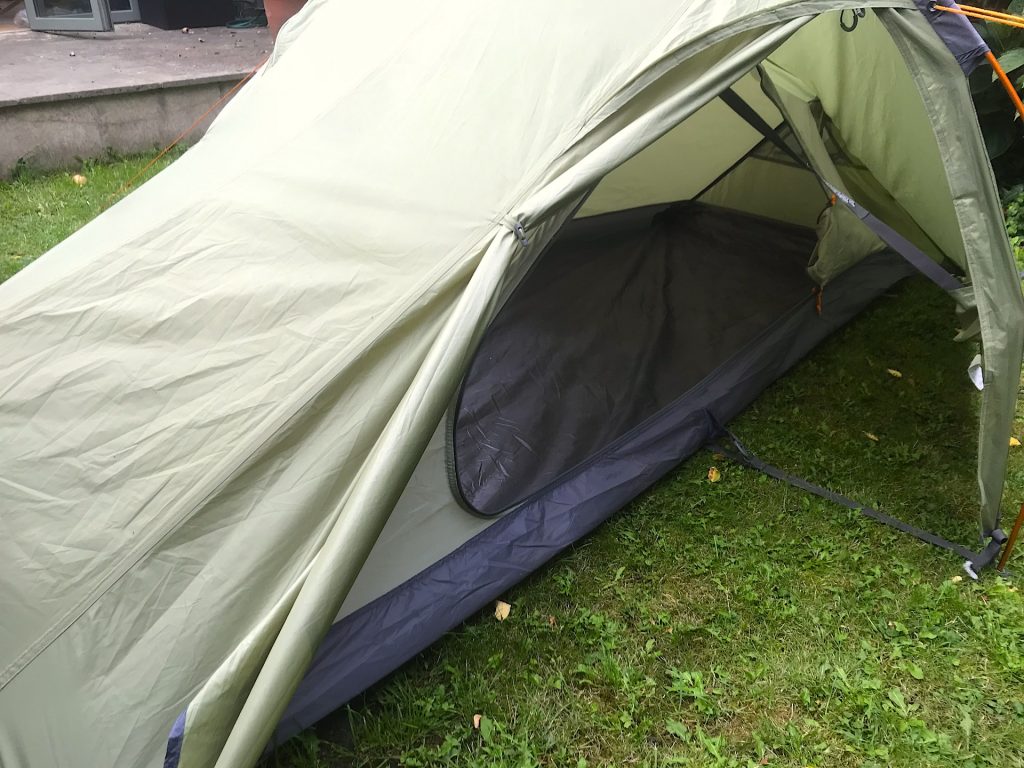
Overall
Both of these tents are fantastic, and that makes the choice all the harder. If you want a fairly inexpensive tent then one of these would be perfect – but which one? It really is a personal decision. Despite the Cairngorm’s advantages, I do prefer my Nevis – it’s no heavier and it’s cheaper. The lower waterproof rating on the Nevis isn’t a problem, as all the surfaces slope steeply enough for the water just to run off anyway.
If you’ve got this far you’ll want to consider all your options for camping shelter. Another very good, and often cheaper and lighter, option to buying a tent is to go with a tarp. We go through the differences and the pros and cons of each in our comparison of Tarps vs Tent. If your mind is set on a tent, we’ve also got a comparison of the Nevis vs the Vango Banshee here.


I didnt get on with the nevis .. being stuck inside with no mesh was a nightmare . The cairngorm slither of mesh made a huge difference when the midges were incessant ,
What about wind resistance, would you say it’s good or would it be better to go for the slightly sturdier (and heavier) banshee 200 thanks.
Hi Tom, Having used both the Banshee and the Nevis/Cairngorm, I’d say the Banshee is definitely sturdier overall – its just made of thicker material. This does make it heavier, as you say. I make sure to get my Nevis pitched pointing into the wind and to make sure everything is well tensioned, and I’ve never had any problems with it. I have used it in very strong winds and no damage was done at all, but I could imagine changeable winds being more of an issue.
In short, the Nevis/Cairngorm is great, but if you like more extreme/exposed camping, I’d go with the banshee.